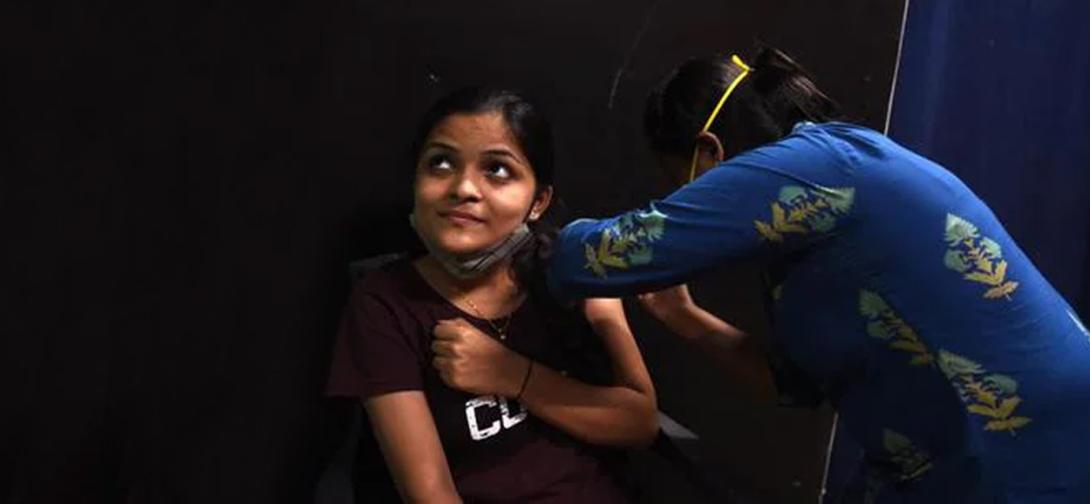One billion doses: India’s leadership in the world
All signs indicate that the global economy is recovering much faster than expected. The key to this faster than expected global recovery has been vaccinations. Clearly, vaccines are the most potent weapon in this global battle against the pandemic.
India has been providing free vaccination doses to citizens, irrespective of their income status. Our target is to cover 940 million people aged 18-plus by December 2021. The vaccination drive commenced with vaccination to all health care workers. The programme was then expanded to include vaccination of frontline workers, citizens above 60 years, citizens above 45, and, eventually, citizens above 18. All vaccine doses were procured by the Government of India and provided free of cost to state governments. Those who can afford to pay and choose to do so have been free to use private vaccination centres, exemplifying the public-private nature of India’s vaccine programme.
We have also developed two indigenous vaccines, a testament to our research and development (R&D) capabilities. India’s DNA Covid vaccine, ZyCoV-D, is the world’s first and heralds a wave of DNA vaccines for various diseases that are undergoing trials around the world. Similarly, India’s first mRNA vaccine against Covid, developed by Gennova BioPharma, has got approval for Phase III trials. Our domestic vaccine manufacturing capabilities have been leveraged to serve the world.
As India touches the billion vaccinations mark, both the scale and speed of the rollout must be appreciated. Close to 300 million people will be fully vaccinated. That is more than the entire population of Indonesia, Pakistan or Brazil, the most populous countries in the world after China, India and the United States (US). In fact, it is close to the entire population of the US as well.
This means that at India’s pace, these countries would have been fully vaccinated by now.
At our peak, we administered 25 million doses in a day, a world record. To put it in perspective, this is equivalent to the entire population of Australia. Over the past month, we have averaged close to seven million doses every day. Again, for perspective, this rate suggests that a country with a population of 25 million would receive their first doses within three to four days, and be fully vaccinated within a few months.
These numbers cannot be scoffed at. The enormous effort has been driven by Prime Minister Narendra Modi’s leadership and encompassed the central and state governments and the private sector including the last health worker at the grassroots level. It is through the efforts of frontline workers in 70,000-plus vaccination centres across the country, that we have been able to achieve such feats.
At the time of the rollout, the supposed digital divide was a key criticism of India’s vaccination policy, with the argument that rural areas would be left out, as the information technology platform could only serve the urban, educated elite. However, these criticisms have now fallen flat. More doses have been administered in rural than in urban India. India’s efforts in promoting digital literacy and connectivity have paid dividends. India’s indigenously developed digital platform, CoWIN, has been a game-changer. It allows every resident in India the facility of conveniently and safely booking vaccine appointments, and also generates digital vaccine certificates in real time. Now, as travel opens up, citizens can also link their passports to their vaccination certificates, which allows them to generate international travel certificates. New features have been added so that foreign nationals residing in India can use the same platform easily to get vaccinated. The entire process is seamless, digital, and verifiable.
Not only is India producing enough vaccines for domestic use, but it is now able to export again. Before pausing exports owing to domestic requirements, India had exported nearly 66 million doses of vaccines, under the Vaccine Maitri Programme to 95 countries. Over 100 million doses have been sent to neighbouring countries such as Nepal, Myanmar, Bangladesh, and Iran.
This is set to gather further pace in November.
These are huge numbers, especially since many countries continue to hoard vaccines or delay their administration. According to a report by Airfinity, the G7 nations and the European Union would have procured a billion more vaccine doses than they needed, and by the end of 2021, 10% of these are expected to expire. The United Nations secretary-general, Antonio Guterres, described the inequitable distribution of global vaccines as an “obscenity”, calling it a “moral indictment of the state of the world”. At a time where developed nations have shied away from taking the lead, India has been attempting to bridge this divide. India’s efforts in ensuring vaccine equality need to be lauded, as it is taking responsibility which should have rightly been taken by the developed world.
The best bet to resume normalcy is vaccines. India has made significant strides in ensuring a speedy and efficient vaccine rollout. As we continue to increase vaccination coverage, discretionary services are also rebounding, boding well for the rest of the economy. This has been evident in the services purchasing managers index, a leading indicator of the economy, which has been above its long-term average in the past two months. Yet, there remains the issue of addressing global vaccine inequality. It is time for the global community to come together and ensure that vaccine inequality ends now. India has been taking the lead, but it is now time for developed nations to start walking the talk in reducing vaccine inequality.
Amitabh Kant is CEO, NITI Aayog
The views expressed are personal
 National Portal Of India
National Portal Of India 


